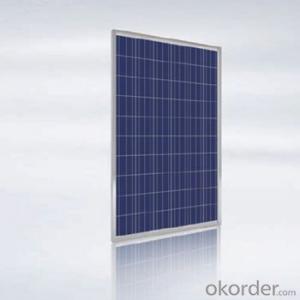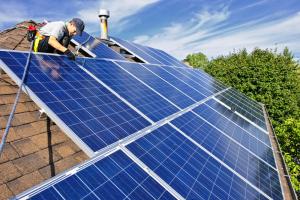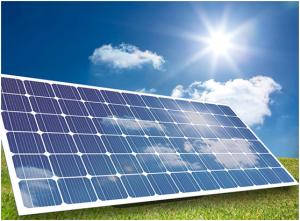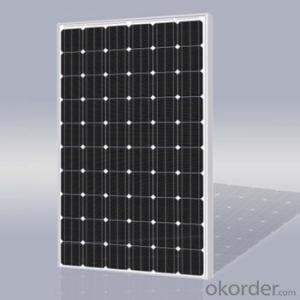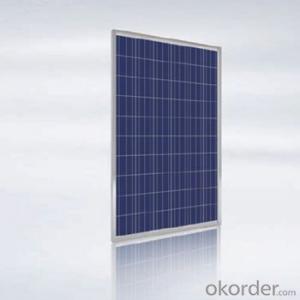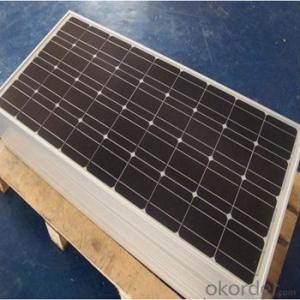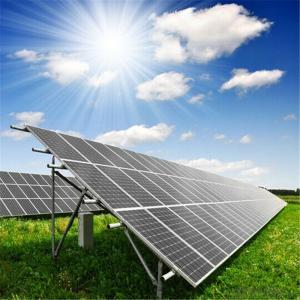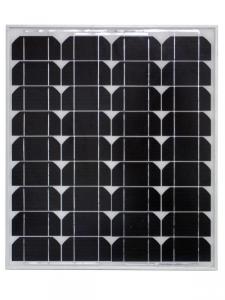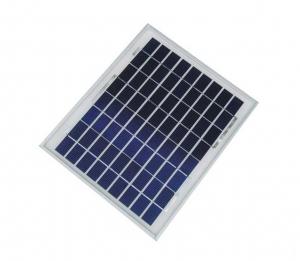ZDNY Polycrystalline Solar Module 240W-250W with Battery Backup
- Loading Port:
- Shanghai
- Payment Terms:
- TT OR LC
- Min Order Qty:
- 100 pc
- Supply Capability:
- 30000 pc/month
OKorder Service Pledge
OKorder Financial Service
You Might Also Like
Description:
Solar Monocrystalline Series (240W—250W) l : High efficiency crystalline solar cell. Even if under the weak light, the solar module can produce maximum power output.
II Tempered glass (toughened glass): Anti-reflecting coating and high transmission rate glass increase the power output and mechanical strength of solar module.
III EVA and TPT: Using high quality EVA and TPT to prevent destroying and water.
IV AI frame: Without screw, rner connection. 6 holes on the frame can be installed easily.
V Junction box: Multi function junction box with water proof.
VI Long lifetime: ≥25 years; Less power decrease.
VII Good performance of preventing from atrocious weather such as wind and hails.
VIII Resisting moisture and etching effectively, not effected by geology.
Standard Test Conditions of Solar Monocrystalline Series :
The opto-electrical specifications shown below are stabilized values being measured at Standard Test Conditions, Irradiance: 1000W/m2, Spectrum: AM1.5 at 25°C, The info below is subject to manufacturing tolerances. Where appropriate minutes of measurement are available and are used for the dimensioning of the installation.
Advantages of Monocrystalline Silicon Solar Panel
• CNBM Solar performance guarantees for 25 years
• 12 years guarantee for workmanship
• Timeliness of delivery
Specification of Solar Monocrystalline Series
- Optimal permutation on solar cells to keep enough heat diffusion, decreases hot spot effect.
- High quality and anti-ageing EVA, weather resistance backside raw materials assure reliable solar panels.
- Passed 5400Pa mechanical loads testing by UL, can withstand bad and high mechanical load working environment.
- With good sealed performance, moisture resistant, aging resistance, high/low temperature resistant, the inner terminals of our junction box owns good electrical performance transmission. Bypass diodes used can avoide hot spot effect and damages to panels. Output cables and mating connectors are safe and reliable for installation application. Adopt weather resistance, sealed, good sticky silica gel when assembling.
- Strict quality inspection on each procedure and 100% electrical performance test to meet power requirements.
- 0~+3% power tolerance.
- classification for all the panels in order to improve the integral performance of system and solar panel life span.
- TUV、UL、MCS、CE、ROHS、Golden Sun certified
- Underwriting of 25years output power warranty by The People's Insurance Company of China.
Characteristics of Solar Polycrystalline Series

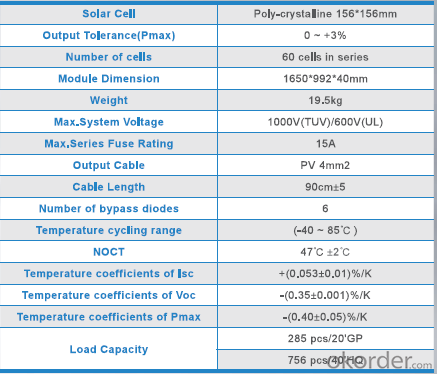


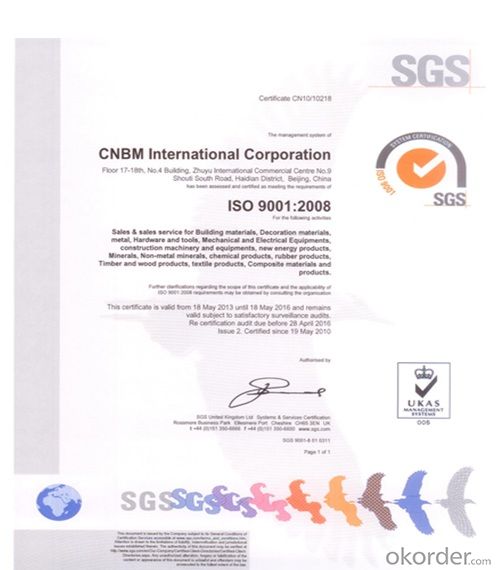
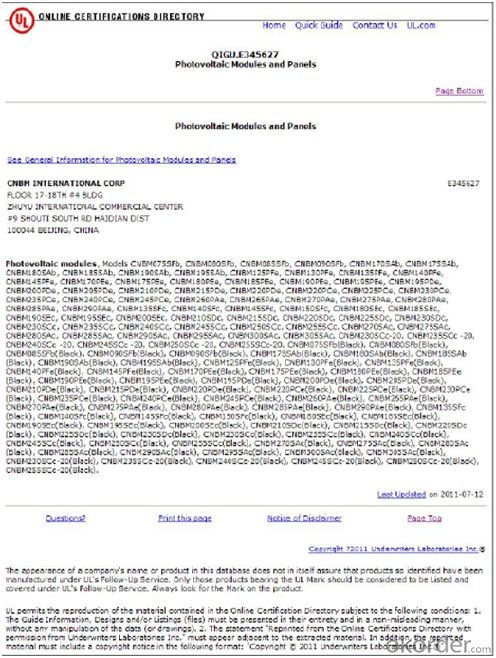
FAQ
We have organized several common questions for our clients,may help you sincerely:
①What price for each watt?
It depends on the quantity, delivery date and payment terms,
②What is your size for each module? Can you tell me the Parameter of your module?
We have different series of panels in different output, both c-Si and a-Si. Please take the specification sheet for your reference.
③Can you provide the peripheral products of the solar panels, such as the battery, controller, and inverter? If so, can you tell me how do they match each other?
Yes, we can, we have two companies for solar region, one is CNBM International, the other is CNBM engineering Co.
We can provide you not only the solar module but also the off grid solar system, we can also provide you service with on grid plant.
④What is your warranty system?
Our product performance guarantees for 25 years
• 12 years guarantee for workmanship
• Timeliness of delivery
• Quality Products certified (TÜV, UL, CE, ISO)
⑤How do you pack your products?
We have rich experience on how to pack the panels to make sure the safety on shipment when it arrives at the destination.
⑥ Can you do OEM for us?
Yes, we can.
⑦How long can we receive the product after purchase?
In the purchase of product within three working days, We will arrange the factory delivery as soon as possible. The pecific time of receiving is related to the state and position of customers.Commonly 7 to 10 working days can be served.
- Q: Are solar panels a good investment?
- Yes, solar panels are a good investment. They provide long-term financial benefits through reduced energy bills, potential tax incentives, and increased property value. Additionally, they contribute to a cleaner environment by reducing reliance on non-renewable energy sources.
- Q: What materials are solar panels made of?
- Solar panels are typically made of photovoltaic (PV) cells, which are primarily composed of silicon, along with other materials such as metal frames, glass, and encapsulation materials.
- Q: What are the financial benefits of installing solar panels?
- There are several financial benefits of installing solar panels. Firstly, solar panels help to significantly reduce or even eliminate electricity bills, as they generate free and renewable energy from the sun. Additionally, in many countries, homeowners can sell excess electricity generated by their solar panels back to the grid, earning them credits or money. Furthermore, installing solar panels can increase the value of a property, making it more attractive to potential buyers in the future. Lastly, solar panel owners can take advantage of various government incentives, tax credits, and rebates, which can further reduce the upfront cost of installation and provide long-term savings. Overall, solar panels offer a cost-effective and sustainable solution that can lead to significant financial savings over their lifespan.
- Q: I'm looking at solar panels and I have NO IDEA what this stuff means.They come in catagories of Watts. What does that refer to? If a solar pannel is in the 200-watt catagory, what does that really mean? Will it produce 200 watts an hour, a day, a week, a month, a year?? How many watts of energy does the average house use up in one month? I really wish they would just tell me on the website!! :(0 points!!!!!!!! :D
- Ok, seeing your icon is a female, I'll take a chance and offer a possible conversion factor. In diets, you count calories. When you exercise, you burn calories per minute or hour. In one exercise session you burn a total number of calories. And remember, 000 calories = kilo-calorie = food calorie. Same with solar panels and electrical power (same stuff, different units). Solar panels come in many watts sizes, like different foods and portions have different calories produced. When these panels are exposed to sunlight, they will generate this amount of watts for as long as you expose them (the units are kilo-Watt-hours), basically, like burning calories on a bike for an hour burns a total of x calories for that hour. If you have a 2-hour day, then a 00 watt panel will generate a possible total of 2 hours x 00 watts = 200 watt-hours = .2 kilowatt-hours. Just like calories burned during regular exercise varies over the year and your mood, the solar panels will generate varying level of power (watts) depending on the weather. And just like you burn calories at different rates by age and lifestyle, an average house power use is dependent on geographic location, size of house, number of occupants, etc. No real typical profile. I would recommend you get some personalized help in sorting out your power needs, A contractor/installer can give you a quote/estimate or general class of use. A second or third quote would keep you first estimate honest. Good luck!
- Q: They have been around long enough to be cheaper. Unless they are made out of a natural material that is rare and hard to find, there is no reason why they should be so expensive. On another note, I think that all low power devices like cell phones and even laptops should have solar panels. Even if it is not enough to fully power the device for a long period of time, it will provide some electricity savings and with millions of people saving a little power adds up.
- Photo okorder /... Notice it costs over $200 and it takes up a sizable amount of space. Plus you have to expose it to bright sun light. Over all this is not something the average consumer wants to spend money on or fuss with. If something is expensive, difficult or inconvenient to use then people won't use it. Just the basic economics of such a device limits its sales never mind its functionality and usability. Even if you made a small one buit into the cover to extend the battery you won't get much of an extension and you will increase the cost of your laptop. Consider how people shop, will they buy the more expensive laptop for a questionable amount of battery extension? Mass production can lower costs but in order to mass produce something you need a demand that will consume what you produce. But if no one wants the item because of the aforementioned issues than you can't justify mass producing the item. This is like the classic which came first Chicken or Egg problem, one doesn't happen without the other. Cost reduction doesn't happen without consumer demand. This is where tax incentives, subsidies, low cost loans and energy buyback contracts come into play in order to spur on demand and jump start mass production. You could also make electricity extremely expensive by taxing oil and carbon so that a Solar Cell becomes economically competitive to very expensive electricity. Problem with this option is the negative impact high energy costs have on economic activity. Just look at what happened a couple of summers ago when gas hit $4/gal. To spur on demand we need to incentives the use of Solar cells (and other alternative energy). This can be done through several means such as subsidies, tax incentives, low interest loans, energy buyback contracts etc...
- Q: Can solar panels be used for powering outdoor recreational vehicles?
- Yes, solar panels can be used for powering outdoor recreational vehicles such as RVs, campers, and boats. They provide a convenient and eco-friendly way to generate electricity for various appliances and systems in these vehicles, including lighting, refrigeration, heating, and charging electronic devices. Solar panels can harness the sun's energy to charge batteries, which can then be used to power the vehicle's electrical needs, making it a sustainable and cost-effective option for outdoor enthusiasts.
- Q: Im looking at making a self build iPad solar panel charger, Is it possible to get a small solar panel, a battery to hold charge and then a USB output? nothing fancy, just power in and power out?
- You would need a pretty hefty panel, the standard power charger is like 0 watts. You would need more than that for the overhead of charging a battery and converter loss. You would need a regulated supply, like a car ipad adapter, I seen them for like 20 bucks. They have to say Ipad , the ipod/iphone chargers have less power and would charge much slower.
- Q: Dear Friends, I am very much worried about Global warming, So to contribute something for reducing Global Warming I have decided to use Solar Panels. Can anybody tell me what is the price of these Solar Panels and why people are not using them when they are environment friendly. What are the Pros and Cons of these Solar Panels?
- Solar okorder / And thin film solar panel power stations are about 50-60% cheaper now than solar power was in 2000. But they're still not economic in most places. Mike K's claim that solar panels produce more pollution than 'traditional' power is wrong. Coal is over 900g CO2/kWh, plus loads of pollution. Gas is ~400g CO2/kWh.
- Q: What is the average size of a solar panel?
- The average size of a solar panel is typically between 3 to 4 feet wide and 5 to 6 feet tall, with an area of around 15 to 20 square feet.
- Q: what percentage of sunlight is converted into electrical energy in a solar panel?
- Around 20%
Send your message to us
ZDNY Polycrystalline Solar Module 240W-250W with Battery Backup
- Loading Port:
- Shanghai
- Payment Terms:
- TT OR LC
- Min Order Qty:
- 100 pc
- Supply Capability:
- 30000 pc/month
OKorder Service Pledge
OKorder Financial Service
Similar products
Hot products
Hot Searches
Related keywords
